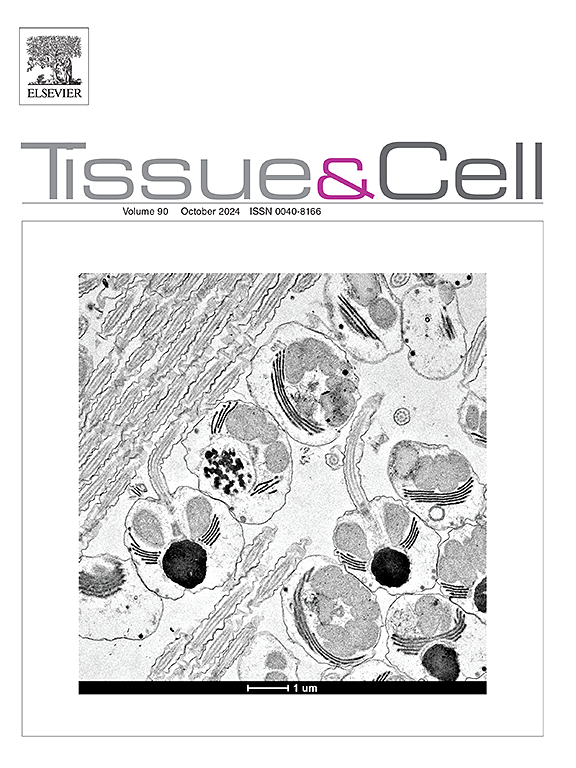Rotenone-driven DNA hypermethylation of the miR-6991–3p promoter induces death of mouse brain organoids
IF 2.7
4区 生物学
Q1 ANATOMY & MORPHOLOGY
引用次数: 0
Abstract
Rotenone has potential chemical toxicity in the nervous system of both insects and mammals, but its deep molecular biological mechanisms have not been clarified. Here, the epigenetic regulatory mechanism underlying the toxicity of rotenone was studied using murine brain organoids (mBOs). Transmission electron microscopy indicated that rotenone destroyed mBOs’mitochondrial structure. RRBS-Seq showed that some promoter regions from the DLK1-DIO3 imprinted microRNA clusters were hypomethylated. But, rotenone stimulated hypermethylation significantly on the promoter DNA of miR-6991–3p. MiR-6991–3p in the rotenone-treated mBOs had the greatest decreased miRNA expression compared with the control. Meanwhile, luciferase report assay indicated that miR-6991–3p induced a decrease in luciferase activity via binding to specific sites on the 3′UTR of DEDD2 gene. To overexpression of miR-6991–3p attenuated mBO proliferated inhibition and cell death, accumulation for lipid peroxidation products significantly by rotenone inducing. Subsequently, results of cell staining and molecular biology experiment revealed that overexpression for miR-6991–3p significantly weakened expression levels of death-related genes (DEDD2, caspase-8, caspase-3, and caspase-1), but significantly elevated expression levels of cell proliferation-related genes (Ki67 and BCL2) in rotenone treated mBOs group. Here, we reveal a novel epigenetic mechanism of rotenone-induced neuronal death, in which rotenone induced promoter DNA hypermethylation of miR-6991–3p in the DLK1-DIO3 imprinted cluster. This caused miR-6991–3p transcriptional activity to be downregulated, which subsequently significantly increased the expression of its target gene, DEDD2, ultimately leading to neural organoid cell death.
求助全文
约1分钟内获得全文
求助全文
来源期刊

Tissue & cell
医学-解剖学与形态学
CiteScore
3.90
自引率
0.00%
发文量
234
期刊介绍:
Tissue and Cell is devoted to original research on the organization of cells, subcellular and extracellular components at all levels, including the grouping and interrelations of cells in tissues and organs. The journal encourages submission of ultrastructural studies that provide novel insights into structure, function and physiology of cells and tissues, in health and disease. Bioengineering and stem cells studies focused on the description of morphological and/or histological data are also welcomed.
Studies investigating the effect of compounds and/or substances on structure of cells and tissues are generally outside the scope of this journal. For consideration, studies should contain a clear rationale on the use of (a) given substance(s), have a compelling morphological and structural focus and present novel incremental findings from previous literature.
 求助内容:
求助内容: 应助结果提醒方式:
应助结果提醒方式:


